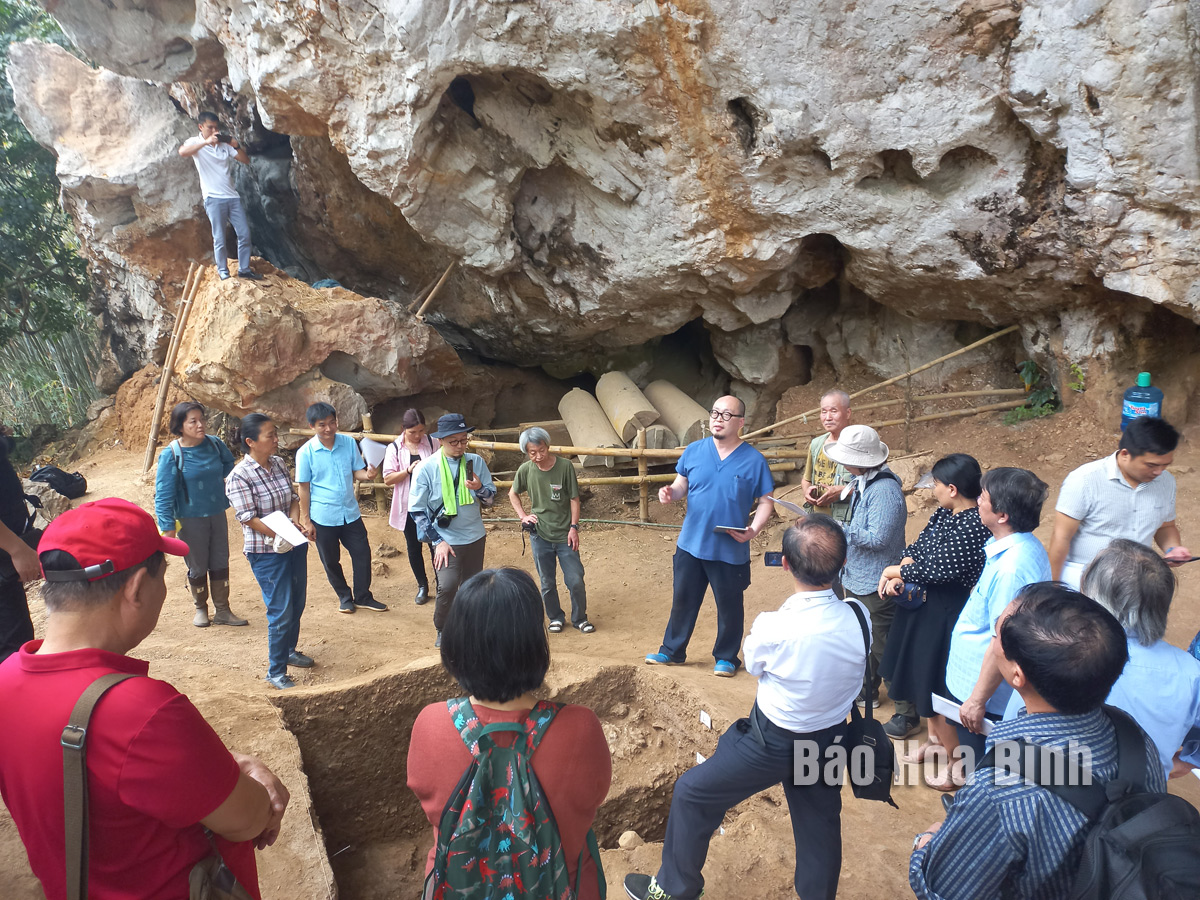
Nestled in the northwest, Hoa Binh province stands as a strategic gateway, connecting the bustling capital of Hanoi with the Red River Delta, north central and northeastern regions. Its unique location also links it to Upper Laos, making it a pivotal area for trade and cultural exchange.
Scientific studies and discoveries at the Phung Quyen cave site in Mai Hich communie, Mai Chau district, confirm that Hoa Binh was home to ancient Vietnamese people about 24,000 years ago.
Hoa Binh is synonymous with the globally renowned Hoa Binh culture, considered the cradle of ancient Vietnamese civilisation. This region is steeped in myths, folklore, and legends, offering a rich tapestry of ethnic festivals, cultural heritage, and traditional music. The sounds of gongs resonate through the landscape, and folk traditions and epic songs tell the stories of the Muong, Dao, Tay, Thai, Mong, and other ethnic groups who call this land home. The province is a cultural treasure trove that reflects the essence of Vietnam’s ethnic diversity and profound humanistic values.
Dr. Nguyen Viet, Director of the Southeast Asia Prehistory Centre, has conducted extensive studies on the area, confirming its significance as one of Vietnam's most archaeologically rich regions. Over the past century, both Vietnamese and foreign archaeologists have been captivated by the Hoa Binh culture, which remains a unique prehistoric marvel nearly a century after its global recognition in 1932.
Vietnam boasts over 130 sites related to the Hoa Binh culture, with the province itself home to 72 recognised and studied sites. The culture is closely linked to French archaeologist Dr. Madeleine Colani (1866-1943), whose early discoveries of prehistoric remains in Hoa Binh revealed the existence of a previously unknown culture of hunting and gathering.
Viet noted that among the Hoa Binh culture sites, the Xom Trai cave in Tan Lap commune, Lac Son district, is considered the most significant. This site is a prime example of the Hoa Binh culture in Vietnam and Southeast Asia. Recent studies indicate that this location dates back between 7,000 to 22,000 years.
In mid-May, the provincial Museum organised an exhibition named "Duoi la co Dang Cong san Viet Nam quang vinh” (Under the flag of the glorious Communist Party of Vietnam). This meaningful activity took place in the joyful atmosphere to celebrate the country's major holidays and the Party congresses at all levels for the 2025-2030 term, towards the 14th National Party Congress.
A delegation from Hoa Binh province led by Colonel Trinh Duc Thiem, Commander of the provincial Military Command, completed a mission to visit and encourage officers and soldiers stationed on Truong Sa and a DK1 platform from May 20 to 26 as part of activities of the Vietnam People’s Navy. The delegation included 12 senior officials from various provincial agencies and units.
Storytelling and painting contests honouring President Ho Chi Minh have been held at the Hoa Binh provincial Youth Activity Centre.
The Hoa Binh provincial People's Committee held a gathering at the provincial Military Command headquarters on May 20 to commend the armed forces that took part in a military parade celebrating the 50th anniversary of the Liberation of the South and National Reunification on April 30.
Throughout his revolutionary life, Uncle Ho visited Hoa Binh province four times. He also sent dozens of letters, telegrams, greeting cards, and heartfelt messages to local officials, Party members, and people of all ethnic groups, urging them to remain united, support one another, strive for progress, and actively engage in both production and resistance efforts to build a prosperous homeland.
To unlock the full potential of its forest resources, the standing board of the provincial Party Committee on July 30, 2020 issued a Resolution on the sustainable development of production forests through 2025, with a vision toward 2030.



